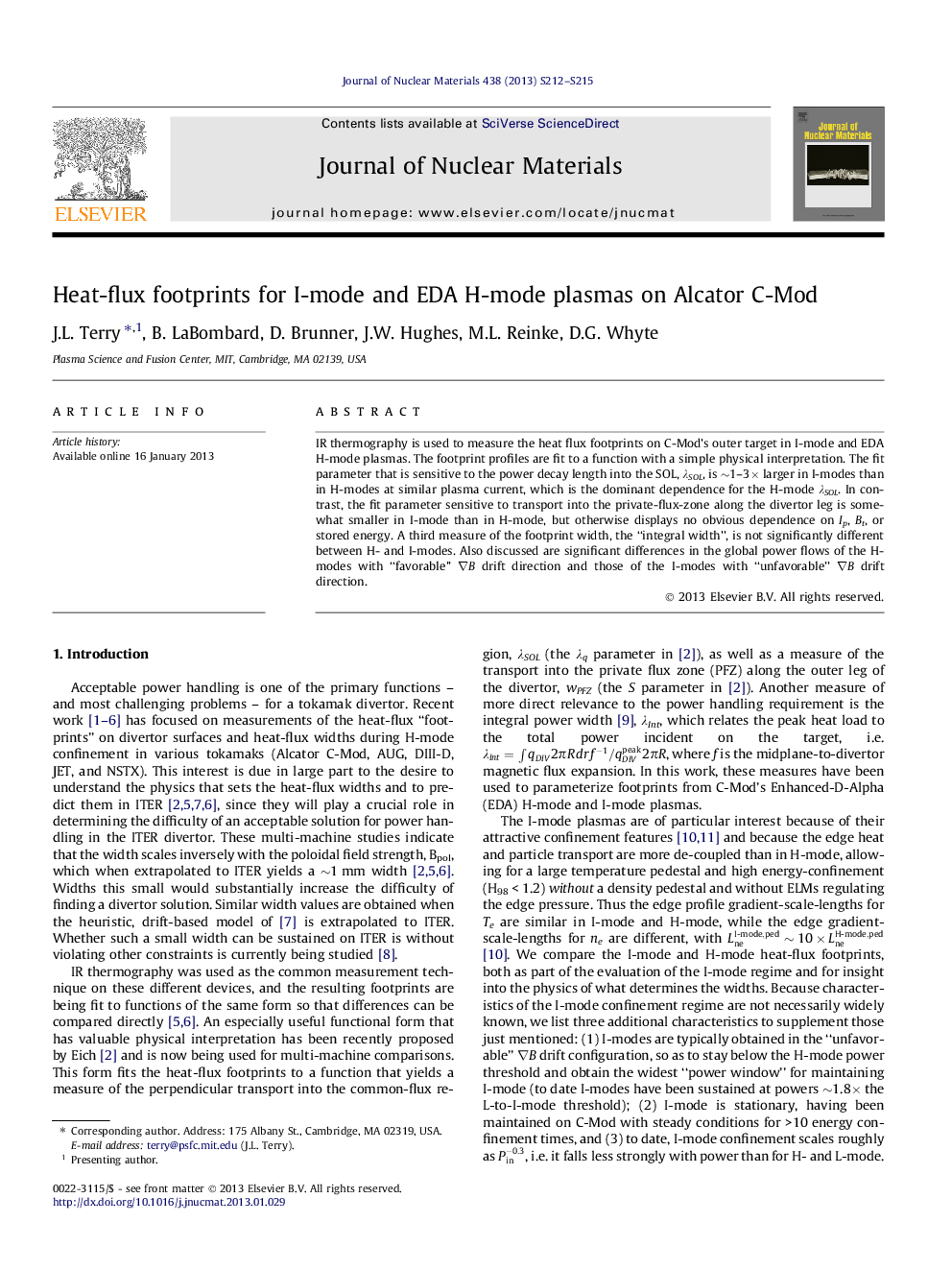| Article ID | Journal | Published Year | Pages | File Type |
|---|---|---|---|---|
| 10644977 | Journal of Nuclear Materials | 2013 | 4 Pages |
Abstract
IR thermography is used to measure the heat flux footprints on C-Mod's outer target in I-mode and EDA H-mode plasmas. The footprint profiles are fit to a function with a simple physical interpretation. The fit parameter that is sensitive to the power decay length into the SOL, λSOL, is â¼1-3à larger in I-modes than in H-modes at similar plasma current, which is the dominant dependence for the H-mode λSOL. In contrast, the fit parameter sensitive to transport into the private-flux-zone along the divertor leg is somewhat smaller in I-mode than in H-mode, but otherwise displays no obvious dependence on Ip, Bt, or stored energy. A third measure of the footprint width, the “integral width”, is not significantly different between H- and I-modes. Also discussed are significant differences in the global power flows of the H-modes with “favorable” âB drift direction and those of the I-modes with “unfavorable” âB drift direction.
Related Topics
Physical Sciences and Engineering
Energy
Nuclear Energy and Engineering
Authors
J.L. Terry, B. LaBombard, D. Brunner, J.W. Hughes, M.L. Reinke, D.G. Whyte,
